Mackenzie Pronk Architects

Mackenzie Pronk Architects aims to produce high quality sustainable architectural design working closely with clients to craft unique, appropriate and cost effective design solutions. We have extensive experience in delivering a range of projects from residential to larger commercial projects. The principals have design experience in public buildings, urban design, industrial, conservation and adaptive re-use. The practice has won Australian Institute of Architects Awards for ESD/Energy Efficiency, Multiple Housing and the Presidents Award and also the National Trust Adaptive Re-Use Award.
Driving directions to Mackenzie Pronk Architects on map
Mackenzie Pronk Architects on Google Maps
Projects:
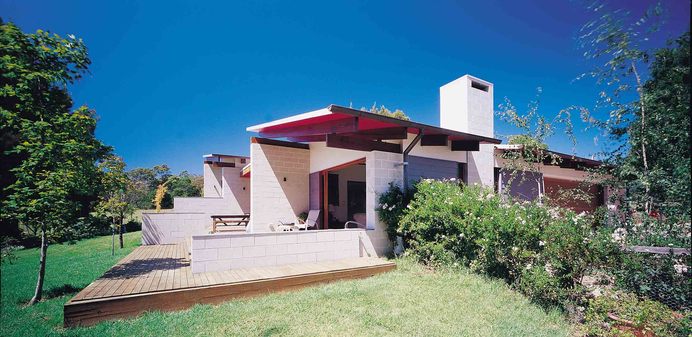
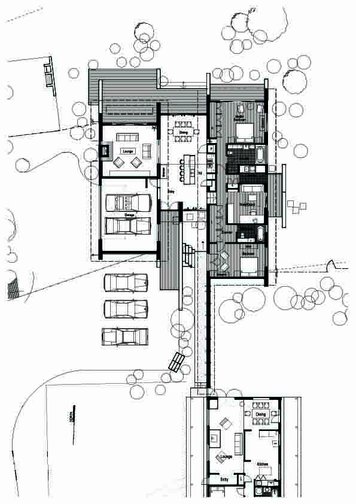
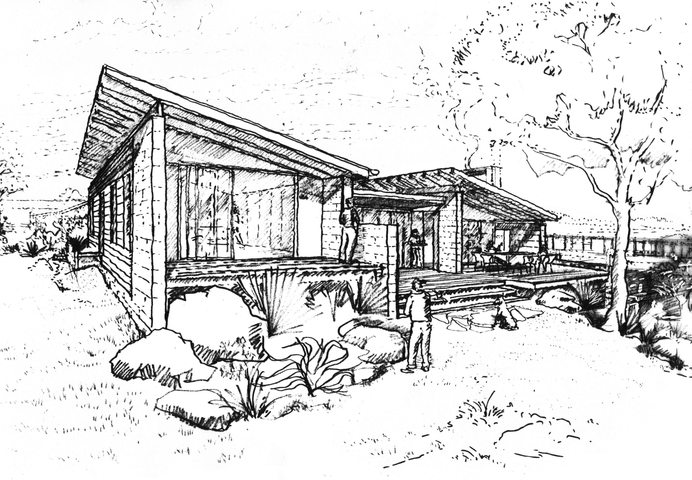

Hatcher House Alpine Berry Farm
Southern Highlands, 2005
Located on a working berry farm in the Southern Highlands the house is a modestly sized, climatically responsive home for a semi-retired couple.The new spaces are structured around a series of parallel, polished masonry walls that become both a fine finish to the internal skin of the reverse veneer walls and elsewhere a high quality external finish which was achieved on a tight budget. The walls enclose a comfortable and light filled interior. The interconnected rooms enjoy northern views across the paddocks and vines of the berry farm. Careful site planning ensured the new and existing houses maintained their own privacy whilst working as a traditional home paddock grouping. A palette of painted weatherboards framed by polished concrete block walls and recycled timber combined with a polished concrete floor create a robust and elemental rural architecture eminently suited to the climatic extremes of the Southern Highlands. Energy efficiency is achieved through the layout that optimises solar access for the winter months to the insulated concrete slab floor. The provision of ample daylight to habitable rooms and the inclusion of solar hot water reduces energy demand. The roof overhangs provide shading to the glazing during the summer months.
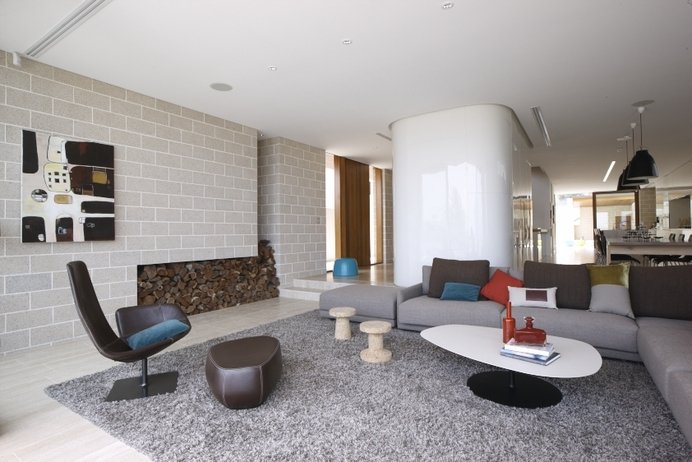
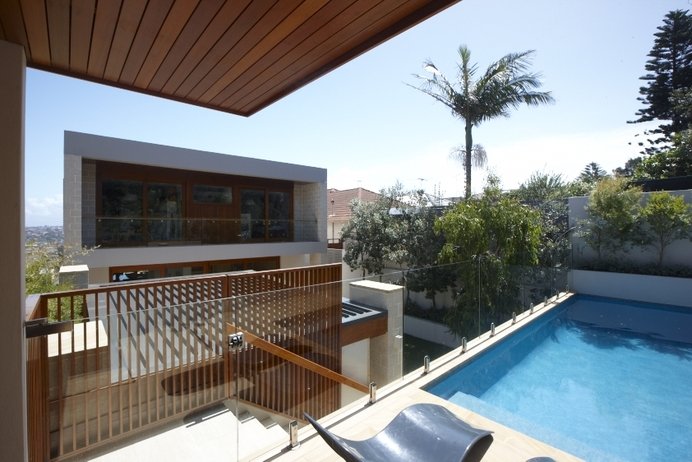
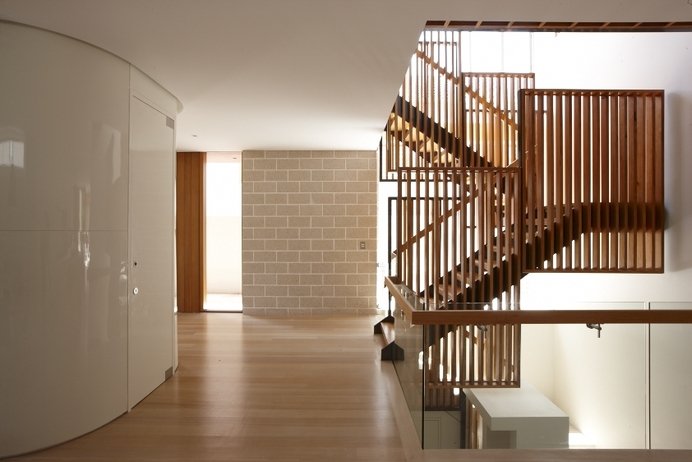
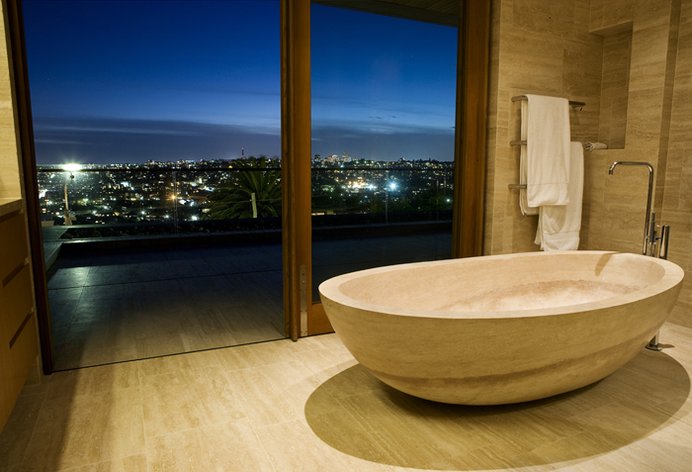
Marsh House
Military Road Dover Heights, 2009
Marsh House has commanding views over Bondi, the Pacific, the red rooves of the east and the city – the site evoked a grandeur of architectural response. A collaboration with the architect client/owner began with sketch plans of a house whose antecedents were mid century modern. The design developed with an honest expression of material and a concern for balance between the houses apparent grandeur and its role as a family home. The design language pursues an eroded pure geometry which allows functionality to override and undermine grandeur. The layout begins with a functional lower ground plane containing garage, guest, cellar and theatre rooms, all arranged around a light well above the central stair. The main level contains entry, lounge, dining, kitchen, family, pantry and laundry and connects through to the primary outdoor spaces. Generous ceiling heights and a palette of high quality self finished materials from polished block walls, travertine floors and over-scaled cedar doors & windows give the main living areas a grandeur and openness. The upper floor is the private realm with 4 bedrooms, a study overlooking the stair void and 3 bathrooms. The house was designed as a family home that can be filled with family and friends and remain both intimate and not easily crowded. The overscaled nature of elements and details allows for this transformation between scales. Rigorous proportion control and rational transitions between self finishing materials gives the exterior an urbanity and civic stance – it presents a public face to a busy road that is restrained yet confident. A restricted palette of quality materials was employed with an attitude that here we were building for longevity. Large rainwater tank and ‘rainbank’ system diverting water to WC’s and laundry. The insulated stone & concrete floors and polished block walls internally provide an effective thermal mass. Passive solar design was employed with a layout that optimises solar access to key habitable spaces for the winter months, with the provision of ample balcony overhangs and operable timber sunshade blades provides shading to the glazing and mass during the summer months. The houses landscaping employs sandstone walls, paving and native coastal plantings to create three simple rectangles of usable space connected by the stair that rises to the upper level poolside.
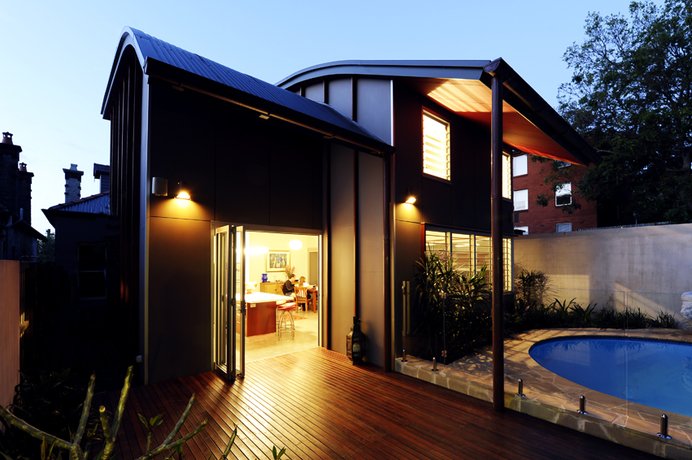

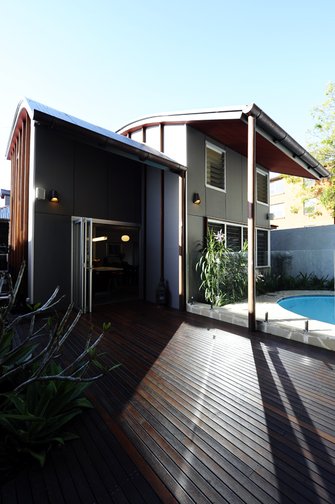
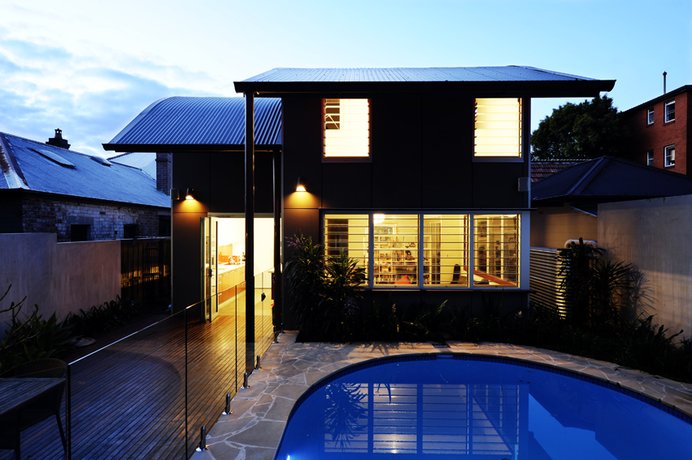
Victoria St
Glebe, 2010
The Glebe project required a full heritage restoration of the four front rooms of the original federation house and included faithful reconstruction of the former streetscape appearance. To the rear a contemporary two-storey structure rises behind and peers over the slate rooves to capture views of the city and beyond. A strong contrast and a clear demarcation between old and new is aided by the program of spaces and a level change at the transition between the two. The new curved volume contains living, dining, kitchen and a new first floor main bedroom with ensuite, walk in robe and private roof terrace. The rear yard has been extensively upgraded with new paving, native landscaping and a pool directly adjacent the new lounge room. The project maximises contemporary living space within a simple volume that curves down toward the backyard ensuring no self-shadowing of outdoor spaces or loss of amenity to either neighbour.





